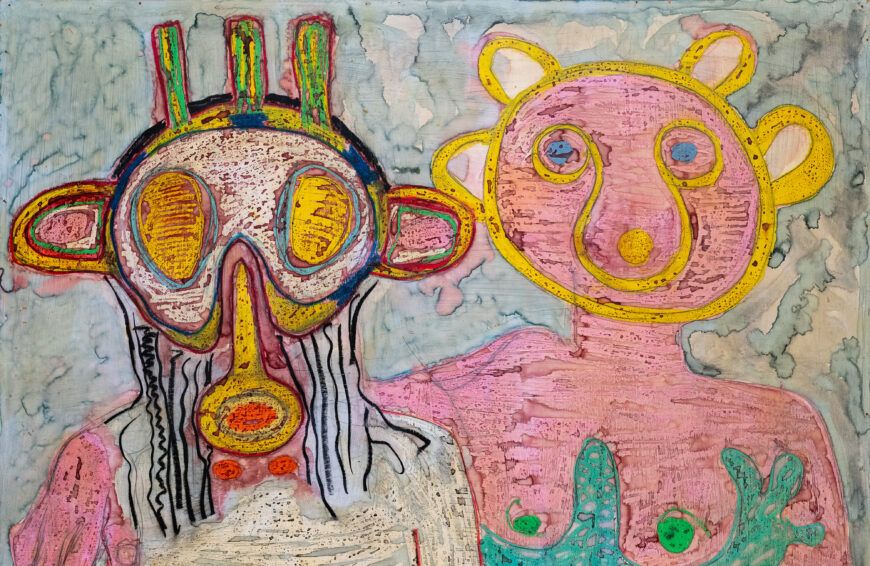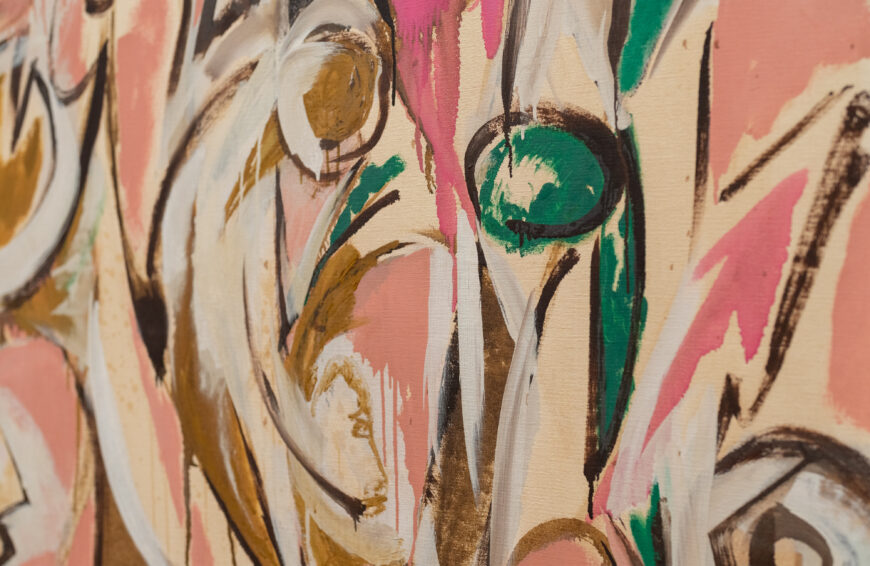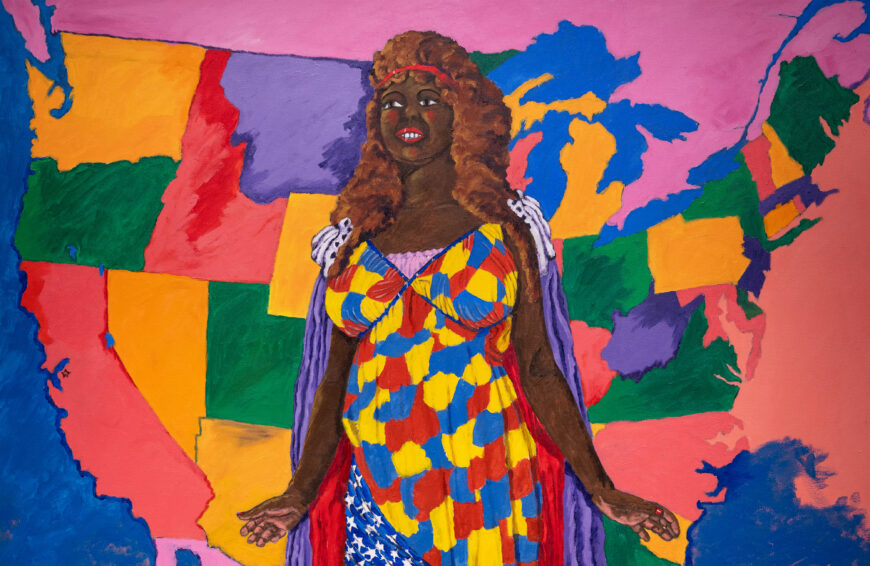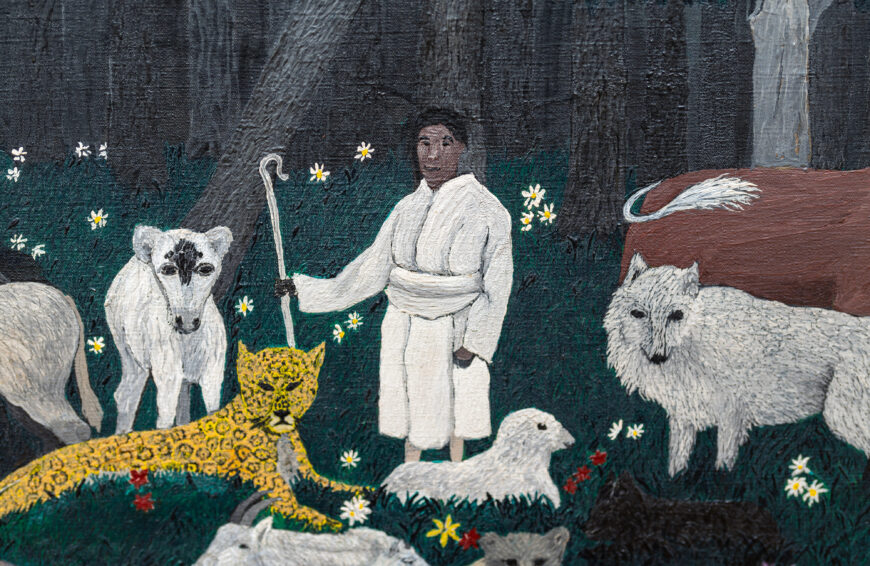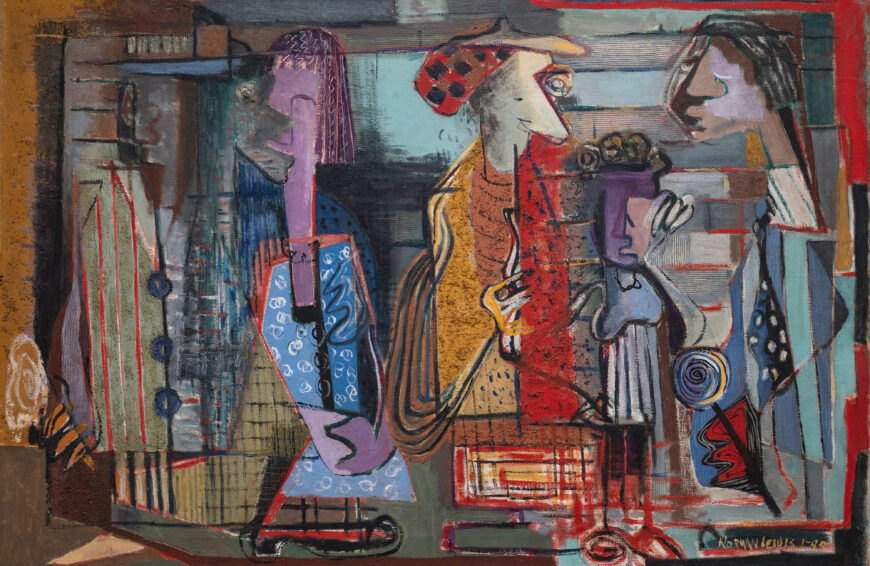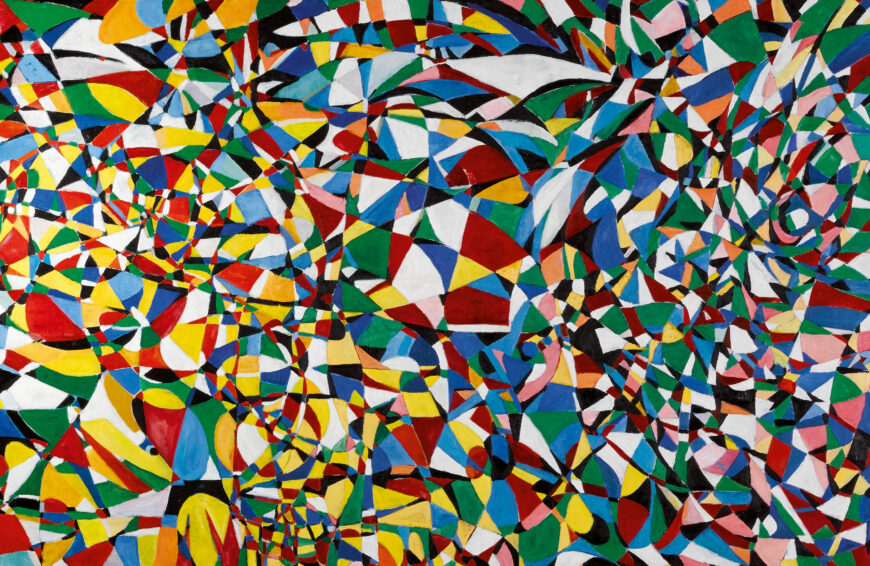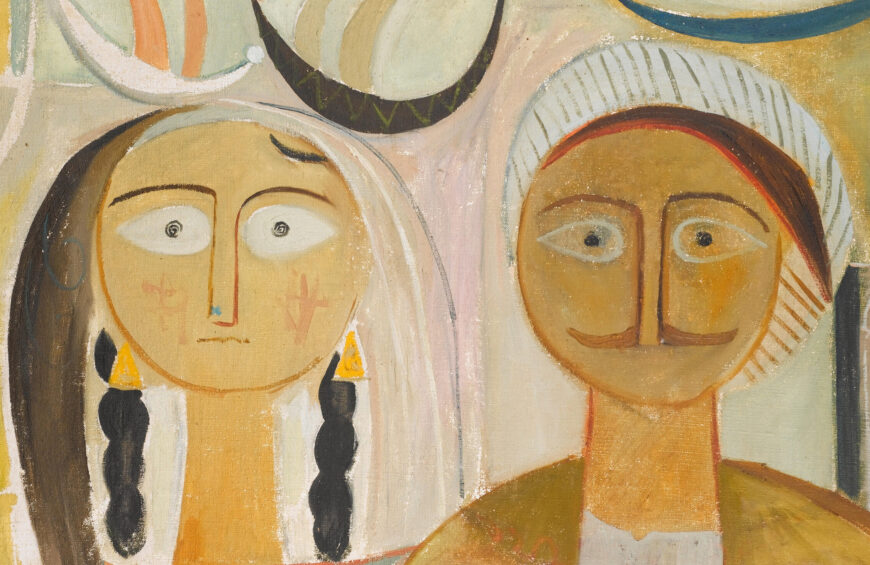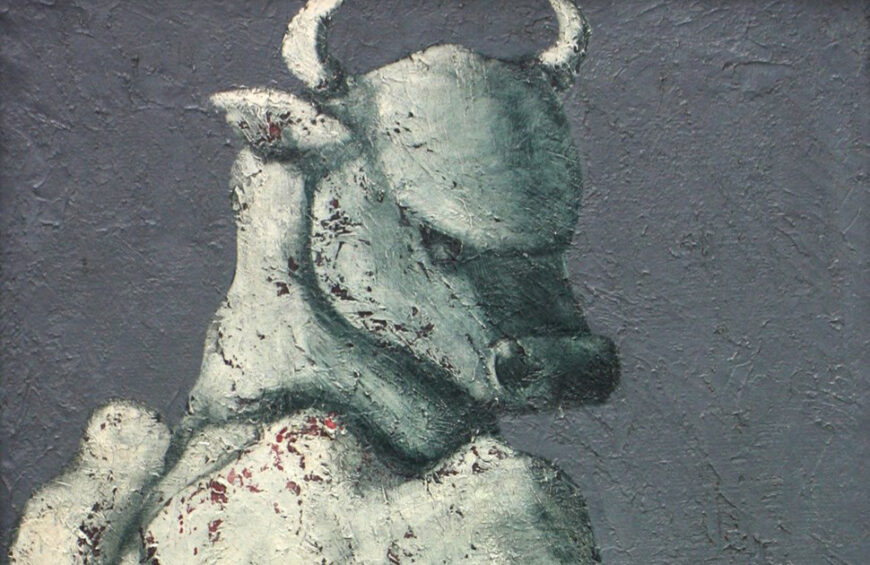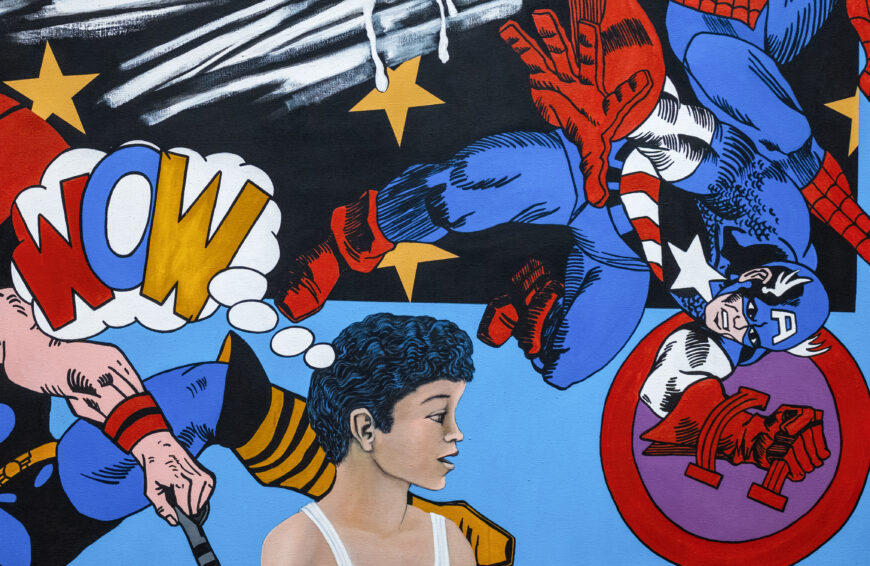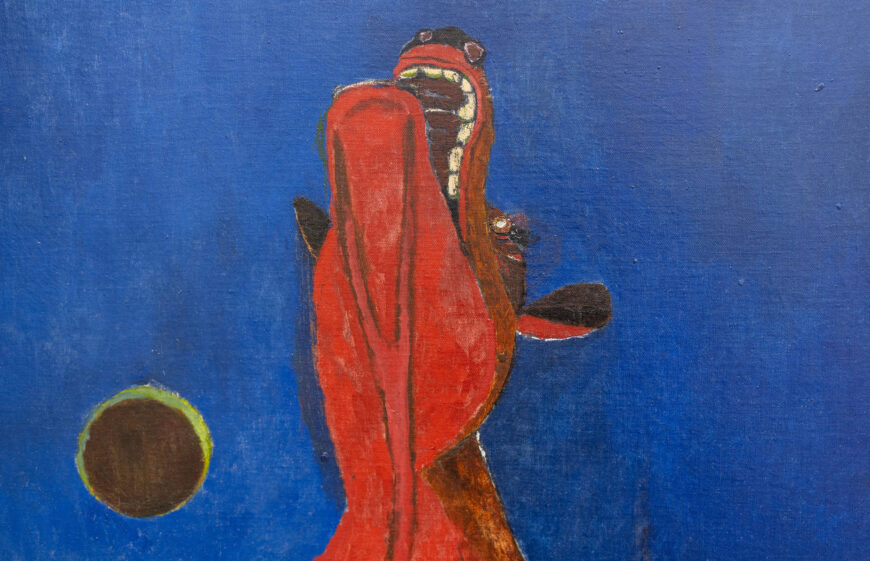Lie portrays man’s dominance over nature in his painting of the construction of the Panama Canal.
Jonas Lie, The Conquerors (Culebra Cut, Panama Canal), 1913, oil on canvas, 152.4 x 127 cm (The Metropolitan Museum of Art, New York). Speakers: Dr. Kate Clarke Lemay, Historian, National Portrait Gallery, Smithsonian Institution and Dr. Steven Zucker
0:00:06.6 Dr. Steven Zucker: We’re at the National Portrait Gallery in Washington, D.C. at a special exhibition titled U.S. Imperial Visions and Revisions. And we’re looking at a large canvas by Jonas Lie. It’s called The Conquerors, but its subject is not what you would necessarily take away from that title.
0:00:24.7 Dr. Kate Clarke Lemay: We’re looking at Culebra Mountain. This is part of the now Panama Canal. And Jonas Lie was fascinated by the technology and the workforce.
0:00:37.8 Dr. Steven Zucker: This was one of the great engineering marvels of the modern era. To be able to connect the Atlantic and Pacific Oceans would mean that ships did not have to sail around Tierra del Fuego, which would have enormous impact for trade and for the U.S. military. The project was begun by the French, but the French abandoned this after the company went bankrupt and they had only progressed a very small amount. The Americans had an enormous task before them.
0:01:05.5 Dr. Kate Clarke Lemay: This is a window into the Culebra Cut of the canal, which was nine miles long.
0:01:12.5 Dr. Steven Zucker: This is an unimaginable effort. Culebra Mountain was the continental divide. That is, all of the rainfall that fell on the eastern side would end up potentially in the Atlantic Ocean and everything on the west side into the Pacific. The manpower, the amount of dynamite. This was an expression of American industrial power. And it’s so interesting because when we look at this painting, it’s beautiful. But this was also a kind of hell.
0:01:38.1 Dr. Kate Clarke Lemay: The labor involved in this kind of excavation must have been brutal. The U.S. employed crews from the West Indies as well as native Panamanians to do the work and they were paid in the silver standard, whereas the U.S. employed white, U.S.-born managers who were paid in the gold standard. So there’s a lot of layers in terms of not only the destruction of the land, but also the victimization of these workers who were doing such difficult work.
0:02:09.7 Dr. Steven Zucker: So the Panamanians and many people from Barbados and other parts of the West Indies were treated very much as second class citizens. What is now Panama had been part of Colombia. But the American President, Theodore Roosevelt sided with insurgent rebels, supporting their calls for independence from Colombia in order to secure the United States ability to build this canal. And the treaty that was written very much favored American interests, ensuring that only citizens of the United States or members of its military could actually live in the Canal Zone.
0:02:41.3 Dr. Kate Clarke Lemay: The Panama Canal Zone was an unincorporated territory until President Carter’s presidency. And then he was able to sign a treaty that released the Panama Canal Zone and returned it to Panama.
0:02:54.4 Dr. Steven Zucker: When we think about a landscape, we inevitably think about a horizontal orientation, but this is vertical. We’re looking down into the great depths of this Grand Canyon, but one that was not created by nature, one that was created by man.
0:03:08.5 Dr. Kate Clarke Lemay: These vertical plumes create a rhythmic pattern that echoes the line of the Culebra Mountain, whose side has been completely cut away. I love that Jonas Lie titled this painting The Conquerors. It’s relating U.S. imperialism to not only Panama and the geopolitical relationship that the U.S. had with it, but also to the physical environment.
0:03:38.6 Dr. Steven Zucker: So, conquering nature, conquering the earth itself. In the 19th century, American landscape painters had celebrated the grandeur and beauty of what they referred to as an untouched wilderness, despite the fact that Native Americans had long lived there. But here, this is almost the inverse. It’s now the 20th century, and this is an expression of man’s dominance over nature.
0:04:03.7 Dr. Kate Clarke Lemay: And it could be seen as a celebration of the Second Industrial Revolution. But because of the way he paints the workers, you see this long line of very abstracted bodies, you can almost sense the exhaustion that these workers must have had as they trudge their way and climb out of the deep cut of the mountain.
0:04:27.3 Dr. Steven Zucker: I can conjure up the incredible cacophony of noise that must have been created by drilling into the rock, by the dynamite, by the incessant trains carrying debris from the excavation. All of this bouncing off the mountains on either side, creating a kind of deafening volume. And I think the artist has expressed that so beautifully in the quick brushwork, in the way that the paint is literally activating the surface of the landscape. The huge cliff on the right side of the canvas seems stable. It is ancient. It has been there forever. But then there’s this velocity that moves from the lower left to the upper right into a kind of infinite space.
0:05:06.9 Dr. Kate Clarke Lemay: And I guess for me, the might and the power behind this man-made canal parallels the might and the power of the United States in its endeavor to create a sea highway that through the Panama Canal, the ocean highway was now complete.


